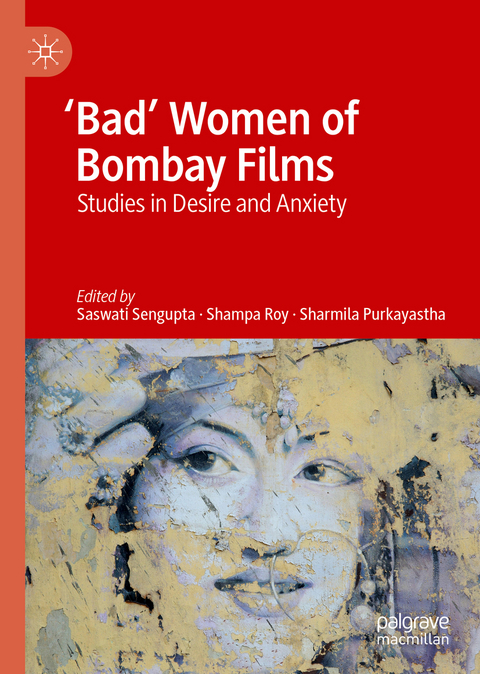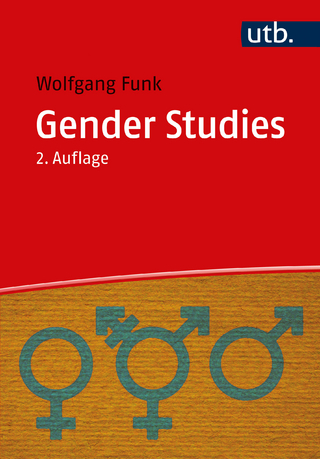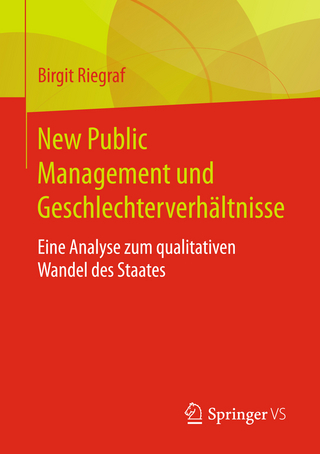
'Bad' Women of Bombay Films
Springer International Publishing (Verlag)
978-3-030-26787-2 (ISBN)
The twenty-one essays examine the politics of female desire/s from the 1930s to the present day - both through in-depth analyses of single films and by tracing the typologies in multiple films. The essays are divided into five sections indicating the various gendered desires and rebellions that patriarchal society seeks to police, silence and domesticate.
Saswati Sengupta, Shampa Roy and Sharmila Purkayastha are Associate Professors of English at Miranda House, Delhi University, who explore the social and material relations in cultural narratives. As part of the Miranda House collective they have engaged with a classical Sanskrit text (Revisiting Abhijn_a_nasa_kuntalam, Sengupta and Tandon ed., 2012) and a modern Indian novel (Towards Freedom: Critical Essays on Rabindranath Tagore's Home and the World, Sengupta, Roy and Purkayastha ed., 2007) before turning to the 'Bad' Women of Bombay Films. Outside their collective endeavour, Saswati has contributed to Goddesses:The Oxford History of Hinduism(2018), and her novel, The Song Seekers (2011), was long listed for the DSC award for South Asian Literature. Shampa has published In Zenanas and Beyond (2011) and Gender and Criminality in Bangla Crime Narratives (2017). She also translates early Bangla crime narratives into English. Sharmila is currently working on women's prison writings of the 1970s in India and in Latin America.
1.Saswati Sengupta, Shampa Roy and Sharmila Purkayastha : Introduction: Breaking BadThe Disorderly Presence at Home2.Ira Bhaskar:Desire, Deviancy and Defiance in Bombay Cinema (1937-1960)3.Shampa Roy, Saswati Sengupta: "haan, haan mein alaida hoon!" (Yes, yes I am different!): the Disorderly Bibi in Sahib, Bibi aur Ghulam (1962)4.Mrinal Pande:The Goddess of Mean Things: the Mother-in-law in Hindi Films5.Anjali Yadav, Anusha Choudhary, Divya Gupta, Ifsha Zehra, Neha Jaji Varghese, Prachi Khari, Shaifali Singh, Soumya Sharma, Tooba Towfiq, Violina Barman:"ek admi tha, usne shadi karli!" ("There was a man who got married!"): Female Agency and Domestication in Omkara (2006)
The Business of the Body6.Deepika TandonThe Politics of Sanitisation / Sanskritisation: the Court Dancers and Classical Pasts (Rajnartaki, 1941; Chitralekha, 1964; Amrapali, 1966)7.Ruth Vanita:Goddess, Saint and Journeying Soul: Courtesans and Religion in Bombay Cinema (1939-2015)8.Sameera Mehta:The Prison-House of Performance: the Figure of the Dancing Girl in Bombay Films of the1960s9.Neha Yadav:Guns, Gangsters and "Gandagi": the Moll in Hindi Cinema10.Rakesh Shukla:Sex Workers in Hindi Cinema: Imagos and RealitiesThe Question of Violence11.Smita Banerjee: The Caged Woman: Female Guilt, Desire and Transgression in Bandini (1963)12.Menka Ahlawat:"itni bhhi mahaan main nahi hoon, raja!" ("I'm not that great, O king"): the Angry Young Woman of the 1970s13.Neha Dixit:Outcast[e] / Outlawed: The Bandit Queen (1996)14.Isha Purkayastha: The Female Atankvadi: Gender, Militancy and the Politics of Representation in the late 90s.15.Nonica Datta: Honoured Mother and 'Honour' Killing: Ammaji in NH10 (2015)
The Advent of the New Woman16.Nupur Mittal:Of Pallus and Pants: Fabricating the New Woman of the New Nation Andaz (1949), Mr. and Mrs. 55 (1955), Shri 420 (1955)17.Megha Anwer: Consumer Pleasures and Hindi Cinema's En-gendered Distribution of Moral Capital in Hum Aapke Hain Koun (1994) and Zindagi Na Milegi Dobara (2011)18.Puja Sen: Twenty-first century Heroines: Modernity in Cocktail (2012), Queen (2014) and Highway (2014)19.Abhija Ghosh:Curiosity, Consent and Desire in Masaan (2015), Pink (2016), Lipstick Under My Burkha (2016) and Veere Di Wedding (2018).
The Screening of the Actress
20.Shikha Kothiyal:"naye naam nit naye roop dhar" (Don new names and new forms daily): the Figure of the Actress in Hindi Cinema21.An Interview with Swara Bhaskar: Playing Anaarkali: Gender, Morality and Erotica.
| Erscheinungsdatum | 22.01.2020 |
|---|---|
| Zusatzinfo | XX, 381 p. 8 illus. |
| Verlagsort | Cham |
| Sprache | englisch |
| Maße | 148 x 210 mm |
| Gewicht | 652 g |
| Themenwelt | Kunst / Musik / Theater ► Film / TV |
| Sozialwissenschaften ► Soziologie ► Gender Studies | |
| Schlagworte | Bombay Film • Cinema and Gender • Hindi Film • Indian Film • Women in Cinema |
| ISBN-10 | 3-030-26787-3 / 3030267873 |
| ISBN-13 | 978-3-030-26787-2 / 9783030267872 |
| Zustand | Neuware |
| Haben Sie eine Frage zum Produkt? |
aus dem Bereich


